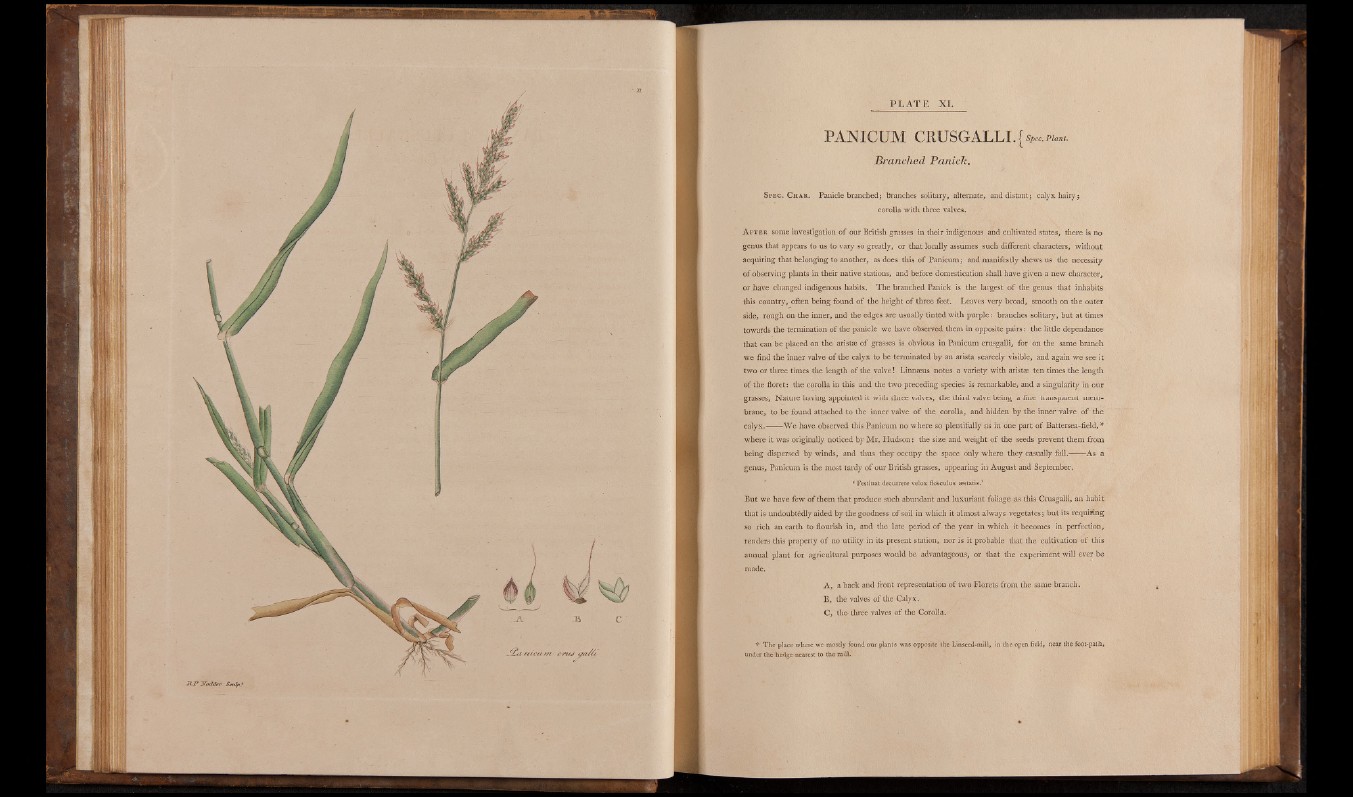
PANICUM CRUSGALLI.
Branched Paniek.
Spec. C h a r. Panicle branched} branches solitary, alternate, and distant} calyx hairy}
corolla with three valves.
A ft er some investigation o f our British grasses in their indigenous and cultivated states, there is no
genus that appears to us to vary so greatly, or that locally assumes such different characters, without
acquiring that belonging to another, as does this o f Panicum} and manifestly shews us the necessity
of observing plants in their native stations, and before domestication shall have given a new character, •
or have changed indigenous habits. The branched Panick is the largest of the genus that inhabits
this country, often being found o f the height of three feet. Leaves very broad, smooth on the outer
side, rough on the inner, and the edges are usually tinted with purple: branches solitary, but at times
towards the termination o f the panicle we have observed them in opposite pairs: the little dependance
that can be placed on the aristae o f grasses is obvious in Panicum crusgalli, for on the same branch
we find the inner valve o f the calyx to be terminated by an arista scarcely visible, and again we see it
two or three times the length of the valve! Linnaeus notes a variety with aristae ten times the length
o f the floret: the corolla in this and the two preceding species is remarkable, and a singularity in our
grasses, Nature having appointed it with three valves, the third valve being a fine transparent membrane,
to be found attached to the inner valve of the corolla, and hidden by the inner valve o f the
calyx.------We have observed this Panicum no where so plentifully' as in one part of Battersea-field,*
where it was originally noticed by Mr. Hudson: the size and weight of the seeds prevent them from
being dispersed by winds, and thus they occupy the space only where they casually fall.------ As a
genus, Panicum is the most tardy of our British grasses, appearing in August and September,
* Festinat decurrere ve'lox flo'sculus sestatis.’
But we have few o f them that produce such abundant and luxuriant foliage as this Crusgalli, an habit
that is undoubtedly aided by the goodness of soil in which it almost always vegetates} but its requiring
so rich an earth to flourish in, and the late period of the year in which it becomes in perfection,
renders this property o f no utility in its present station, nor is it probable that the cultivation of this
annual plant for agricultural purposes would be advantageous, or that the experiment will ever be
made.
A, a back and front representation of two Florets from the same branch.
B, the valves of the Calyx.
C, th© three valves of the Corolla.
* The place where we mostly found our plants was opposite the Linseed-mill, in the open field, near the foot-path,
ider the hedge nearest to the mill.